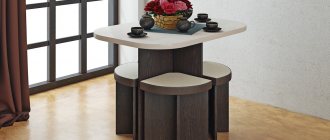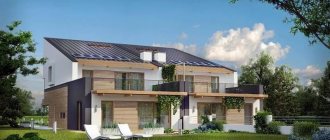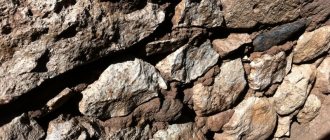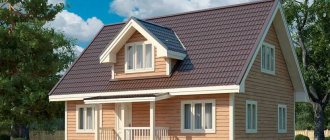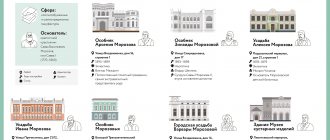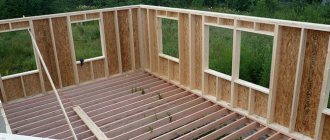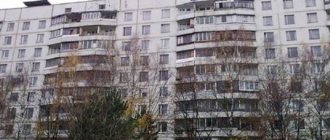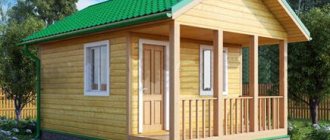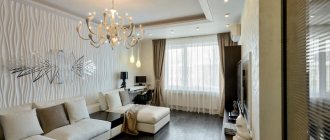The one that is most memorable is the poorly designed dining table. One that is too low or too high, one that does not have enough legroom underneath, one that has too little space. To help you design a table that will be remembered only for its attractive appearance, we will provide basic standards here.
TABLE HEIGHT.
Distance from the floor to the top surface of the lid. Usually it is 68–76 cm.
SPACE ABOVE LEGS
. The distance from the floor to the bottom edge of the drawer is the vertical space for the legs. The minimum distance is 60 cm.
KNEEL ROOM
. The distance from the edge of the table to the leg is the space for your knees when the chair is pulled up to the table. The minimum distance is from 36 to 40 cm, the optimal distance is 36–46 cm.
SPACE ABOVE HIPS
. The distance from the seat to the lower edge of the drawer is the vertical space for the hips when a person sits on this chair, pushed towards the table. Minimum – 15 cm.
ELBOW ROOM
. Side space on the table for each person sitting. The minimum is 60 cm, but 75 cm is much better.
HAND DEPTH
. Front space on the table for each person seated. Less than 30 cm will not be enough, and more than 45 cm will be too much.
SPACE FOR A CHAIR
. The distance from the edge of the tabletop to the wall is sufficient to move the chair away when getting up from the table. Architects claim that a minimum of 90 cm is needed, and 110 cm would be the best option.
Table with king belt
When you hear the word "table", don't you think of a flat panel with four legs? Don't you think of just such a table as the one pictured here? Yes, this design is the most original of the original ones. In the simplest version, the table - a typical design - consists of only three types of parts: legs, drawers and a lid (table top). The legs and tsar belt form a strong, yet open, support structure. In a structural sense, many tables are tsar tables, although we rarely call them that. Much more often they are called by their functional purpose or location: dining table, kitchen table, bedside table, desk. As you look further through the book, you will come across the original designs of different tables, and many of them will return to this “basic” table. This type of table can usually be found in the kitchen or dining room. Its massiveness creates the impression of strength. Although the legs are quite massive, the chiseled profile visually reduces their massiveness. In addition, the reasonable dimensions of the legs make them ideal for strong carpentry joints. Despite the simplicity of the design of a table with a tsar belt, many variations are possible. The table can be round, square, oval, rectangular. Its legs can be square, turned, tapered or carved. Even the drawers can influence the appearance of the table.
Design options
For example, a round table with the same turned legs as the base table looks completely different. The square tsar belt with the round lid gives it this distinct look. Despite the elegant cabriole legs of the table in the Queen Anne style, the massive drawers make it a work desk. The cut-out drawers at the third table make a significant visual and practical difference, making the table appear lighter and taller and creating more hip room for the occupant.
Table drawing
Table drawing
Country style table
This table is called by different names - country style table, retro style table, bar table - and presented in different ways. Furniture researchers usually describe it as a simple, low, oblong table on a massive base with turned legs and legs. This characterizes it quite accurately: a table with a drawstring belt and legs. Legs, especially those as strong as in the picture, significantly increase the durability and rigidity of the structure. With intensive daily use, the legs can increase the service life of the table by years. The terms "country" and "bar" are definitely associated with the 17th and 18th centuries, when such tables were widely used in hotels, taverns and bars in rural areas and towns. Surviving examples of such tables actually have massive legs - although they are heavily worn out by many feet. The table shown here is equipped with one middle leg instead of two longitudinal ones, to make it more comfortable to sit at the table. However, many early tables had pro-legs around the perimeter. The design is simple. The drawbars and legs are cut into the legs with spikes and reinforced with wedges, dowels, etc. The table cover is a wide panel “at the tip”.
Design options
The easiest way to change the design of a table is to change the legs. Our “original” table has round legs - turned - and the shape of the turning can be changed endlessly. Just remember that you will need a flat, rectangular surface for the frame-to-leg joints. On a country-style table, you can also change the legs - both in appearance and in their configuration, as shown in the figure below.
Tools
When making a wooden table with your own hands, you should prepare the following tool :
electric drill;- Bulgarian;
- plane;
- screwdriver;
- hacksaw for wood and metal;
- hammer;
- screwdriver;
- chisel;
- files of different sizes;
- paint brush;
- Grinder;
- construction knife.
If using plywood, you will need an electric jigsaw . Grinding and emery cloth are used to treat surfaces. Measurements and quality control are provided with a tape measure, metal ruler, caliper, plumb line and building level.
Table with drawer and drawer
The name “table with a tsar belt” refers not to the style, but to the design. This type of table is the base for kitchen tables, library tables, desks, etc. Even a workbench. A drawer or two increases the functionality of the table as the tools that go into using it can be stored in these drawers. In some cases, a small box is enough, while in others you need the largest one possible. There are only a couple of ways to incorporate such a box into the design. The simplest approach is to simply cut out a drawer opening in the drawer frame. For a relatively small box and a fairly massive drawer, it is quite suitable. If the opening turns out to be so large that it creates a danger of destruction of the board, then it is better to replace the drawer with box bars. The bars can be rotated 90° so that their width matches the thickness of the leg. Tenon joints provide rigidity. A design with two bars - supraglottic and subgular - is preferable, since the upper bar will prevent the legs from moving inward.
Design options
Installing a drawer in a round table is quite possible. But if the drawer belt has a square or rectangular shape, then you must be prepared that access to the inside of the box will be limited. If the drawer belt is rounded, then the front panel of the drawer should be made in such a way (for example, a layered bent or block-glued structure) so that its shape matches the shape of the drawer.
Table drawing
Table drawing
Materials and mechanisms of structural elements
The durability of the structure and cost depend on the material of the product. You should immediately decide what type of table it will be - steel, aluminum or cast iron. The second important step is to decide on the control mechanism. You should also decide whether the drive should be mechanical or electric. The third step is to select guides. This will affect the processing accuracy of the workpieces.
Base
The following materials are used for the base:
- Cast iron. Expensive, heavy material turns out to be very fragile in operation, so it is used extremely rarely in the production of a drilling machine.
- Steel. The material is the most highly durable and durable. Its main drawback is the cost. Not every master will be able to purchase it.
- Aluminum. Light and soft material is easier to work with. It is not as expensive as steel. But it is not suitable for making a large-sized table, since it will not withstand the heavy weight of large workpieces. This is an ideal option for creating mini-equipment.
If the master processes metal workpieces, then it is better to make the table from steel or cast iron. True, you should immediately evaluate your costs: perhaps purchasing a ready-made manipulator will cost less than expensive hardware. An aluminum tabletop is suitable for working with wood or plastic.
Cast iron
Steel
Aluminum
Drive unit
The drive is a control mechanism with which the coordinate table will change its position. It happens:
- Mechanical. The easiest way is to make it yourself. It allows you to significantly reduce the cost of the table. The basis is a conventional screw or belt drive - this is enough to set up small-scale production. Mechanics are not capable of providing 100% accuracy, and this is its clear drawback.
- Electric. It guarantees zero error when performing work operations, but it is very difficult to do it yourself. Often found in factory models of tables. If there is no own power source near the workplace, this option will not work.
Models with CNC (computer numerical control) should be included in a separate category of coordinate tables. This is high-tech equipment that is used by large enterprises for production in huge volumes. Their main advantages: good performance, as well as complete or partial automation of the process. Disadvantages: high cost, such a drive is not suitable for some parts.
Mechanical
Electric
CNC
Guides
The accuracy of the workpiece processing depends on these elements, so they need to be selected correctly. Among those that you can do with your own hands, the following are distinguished:
- Rail. Rectangular guides are considered structurally more advanced. When using them, lower friction losses are observed and serious errors are avoided. It is possible to connect a lubricant supply system.
- Cylindrical. The use of rounded guides is fraught with high heating due to friction. They are suitable for machines of the so-called small category, but you will have to lubricate all the mechanisms manually.
The guides are made with a carriage and bearing units. The use of plain bearings will ensure high precision machining of the part. The use of a rolling shaft support will reduce friction and extend the service life of the manipulator.
The rolling bearing can cause noticeable play, which reduces the accuracy of the workpiece.
The carriage is a block of guides (mechanism assembly) that moves directly along them. It can provide increased flange dimensions, which allows it to be mounted on the underside of the table. If it is not there at all, then the carriage is placed on top (threaded method).
Rail guides and carriage
Cylindrical
Moving device
When choosing a moving device, you should answer a number of questions:
- What should the processing speed be?
- What positioning accuracy is acceptable when performing work operations.
- How productive the equipment will be used.
A belt moving device is most often used in the manufacture of homemade coordinate tables. It is cost-effective, but has a number of disadvantages. The belt wears out quite quickly and can also stretch during use. In addition, due to its slipping, the accuracy of the moving element is reduced.
Ball screw drive is a more durable and reliable option. Despite the small dimensions of the device, it has a good load capacity, and movement is carried out evenly and with great accuracy. Smooth and almost silent running, as well as high quality surface treatment are not all the advantages of ball screws. However, it also has some disadvantages: high cost and limitations in the speed of rotation of the propeller if its length is more than 150 cm.
Rack and pinion devices provide high speed and accuracy of work, withstand heavy loads, are easy to install and are reliable in operation. The error in rack transmission is extremely low. If their size does not fit, then they undergo a fitting operation.
Belting
Ball screw
Rack and pinion
Table on one support
Single Leg Table
An alternative to a table with a leg at each corner is a table with one central leg. Its tabletop is attached to a central post mounted on low legs that diverge to the sides. Here, drawers are not structurally required, but some single-support tables have them. At first glance, a table without legs and drawers gives unlimited legroom. However, while it does have plenty of knee and hip room, its "creepy" legs tend to get in the way of the sitter's feet. This is the price of stability: the projection of the tabletop should not exceed the support area by more than 15 cm. A little more and you risk knocking over the table by leaning on the edge. Critical to this design is the strength of the center post and its connection to the base or legs. The table shown here has an oval tabletop and - in accordance with the major and minor axis of the oval - two pairs of legs of different lengths. The legs are connected to the racks that taper downwards, and the racks are connected to the tabletop brackets with double tenons into the lugs. These intermediate assemblies are in turn glued onto a square core lath to form a central support that flares upward.
The pedestal table appeared in the 18th century as a small coffee table with a three-legged base. To make a dining table, carpenters combined two single-legged tables or placed an oblong tabletop on two three-legged supports. Modern models range from the simplest utilitarian to multi-rack. The structural advantage of multi-post supports is their increased resistance to tilting. Although the support area may be noticeably smaller than the projection of the table top, a large table with this type of support can be quite stable due to the mass of the support.
Table drawing
Table drawing
trestle table
Table on trestles
Place a wide board on trestles and you have a table. This is the ancestor of the trestle table, which is perhaps the very first type of table. Since ancient times, its form has been significantly improved, but it remains an easy-to-make collapsible table. Its elementary form remains a panel or sheet of plywood on free-standing trestles. And when the trestles are no longer free-standing, that's when the assembly becomes a table, because they must be connected to each other, to the tabletop, or both. In the table shown here, each half of the trestle consists of a fairly wide stand, embedded at the bottom into the leg, and at the top into the tabletop bracket. The wider the trestles, the better the table resists swaying from side to side. There is a long, massive rod embedded in the racks. The tabletop is attached with screws to the trestles, and the structure becomes one whole. Although there is enough space for your feet under the tabletop, you should not forget about the footrest so that when sitting at the table you do not get bumps on your shins. Also, the ends of the tabletop should protrude beyond the trestle by 35–45 cm to provide sufficient space for those sitting there. Many trestle tables are designed to be collapsible. Common methods of fastening parts of a collapsible table are shown on the next page.
Design options
Thinking about the shape of the trestle posts and legs is the easiest way to change the appearance of this table. Several examples are shown here. The original sawhorses were similar to sawhorses, and the X-shape was quite popular in medieval Europe. Pennsylvania Germans and other Germanic settlers brought this form to America, and it is still often found around picnic tables. Today the most common is the H-shape. Shakers (sectarian shakers), who made many trestle tables, usually used graceful legs with “high rise”
Table drawing
Table drawing
Extendable table
Extendable table
The familiar dining table can be expanded by adding an additional cover board. Then an ordinary table for a family can be enlarged to accommodate guests. At first glance, it may not be noticeable that this is a standard table with a drawstring belt, cut into two parts and reconnected using special runners. The runners can be bought ready-made or made together with the table. Each table cover must be at least 60 cm - the optimal space for one seated person.
Design options
The design of an extendable table can vary, as usual, by changing the legs and drawers. The shape of the drawers and table top has virtually no effect on the overall design. If we are talking about a table with drawers, then with the sliding version they work as usual. As the extension range increases, it may be necessary to add an additional leg to support the middle section. And don’t forget about the importance of small details - for example, attaching drawers to the table top
Table drawing
Table drawing
Extendable table on one support
Extendable table on one support
A table on one support is a basic form of table that has some advantages over a table with a drawer belt. If you need a folding table, do not forget to consider this form. Such a table can easily have a sliding, folding, or hinged lid, which will expand it. The most common option is a sliding lid with an insert section. As shown on the next page, the lid is divided into two and its halves are connected by special sliding runners. Thus, these two lid panels can be pulled apart and an additional board inserted between them. What to do with the support is a key question for the master. For the table to be stable, the size of the lid and the support area must be close. In the example shown, the support is vertically divided into two parts, each of which is attached to a corresponding cover panel. When the lid is pulled apart, the support also separates.
Design options
The basic form has a support that separates when the table is extended. This is not the only option. If a relatively small expansion, say 30–40 cm, is acceptable, then the extendable table can be made on a non-dividing support. Another option is to make a table on two supports. A table with a support for each sliding half can expand by 90–120 cm.
Table drawing
Table drawing
Finishing
The table should have an attractive appearance, which is ensured by the finishing. First of all, the end is processed . To avoid scratching on a sharp edge, it is recommended to remove a small chamfer.
The end itself is ground to eliminate the risk of splinters. The entire surface of the tabletop is also processed. It should be perfectly flat, horizontal and smooth.
Important : the most common finishing methods are painting and varnishing.
After sanding the surface, the wood can be impregnated with tinting compounds that will create a specific shade and emphasize the wood structure. A layer of varnish will seal the finish. With the help of alkyd paints, you can provide almost any color of furniture for combination with other interior elements .
Another common option is self-adhesive film. It is often used to finish chipboard countertops. With its help, you can imitate various natural materials - wood, natural stone, marble, metal, etc. Inlay or veneering adds special sophistication to the table.
Advice : if the issue of free space is acute for you, also take a closer look at the designs of a folding table, a laptop table, a coffee table and a children's table.
Table with extendable tabletop sections
Table with retractable tabletop sections
When choosing one of the types of folding tables, one of the most interesting designs is a system with retractable sections. It is easy to make and use. There is nothing unusual about the basic structure of the table. The only difference from the usual underframe made of drawers and legs is the presence of slots in the end drawers. The difference lies on top of the drawer and legs. Instead of attaching the table top to the drawer belt, its side sections, attached to long tapered runners, are laid on the drawer leg assembly. The runners correspond to the slots in the drawers. The existing central board separating the side sections is secured with screws to the frames. The table cover is placed on top of the central board and side sections, but is not firmly secured. When unfolding the table, the side section simply slides out from under the lid. The skids have stops that prevent the section from being pulled out too far. When pulled out, the lid will tilt slightly at first, but when fully unfolded it will be flush with the side section. Since the pull-out sections are part of the design, you won’t have to search through closets and storage rooms for them when you need to lay out the table before guests arrive. You simply pull out a section or two – even if the table is already set.
Design options
The system with retractable sections is compatible with any type of table support, provided that drawers are available. Thus, a trestle table or a two-legged table (as in the picture on the right), equipped with drawers, can have pull-out sections to increase the number of seats. However, the system is not well suited for countertops with shapes other than rectilinear. When folded, the side section is retracted under the lid and its edges remain (or should remain) visible. If the shape is different from the shape of the lid, then the table will probably look quite strange when folded. For example, a semicircular side section located under a square or rectangular lid will create a gap between the lid and the drawers.
Double-support table with extendable sections
Table drawing
Table drawing
Table with sliding folding lid
Table with a sliding folding lid
A table with a sliding folding lid (tabletop) is relatively rare. Despite its low prevalence, this is an excellent system. The table has one additional section - a duplicate of the “main” lid; this section is connected to the lid using hinges and, when folded, lies on the main section (lid). To unfold the table, the “double” tabletop is moved to its extreme position (up to half of the underframe), and then the additional section is folded back onto the underframe. The upper edges of the drawers should be covered with felt or felt to facilitate the sliding of the lid. Making a sliding mechanism is not difficult. Each runner has a ridge that fits into a groove in its guide. The disadvantage is that during periods of high humidity the ridges may become stuck in the grooves. The basic version is usually configured as a side table. When unfolded, the edges of the tabletop are quite far from the tabletop, which creates sufficient space for people to sit under the table. The Y-shape of the legs will provide sufficient space for the legs of those sitting at the ends of the table.
Design options
When folded, this table looks like a somewhat strange dining table. To limit the overhang of the tabletop over the underframe (ensuring stability), the size of the base part should be close to the size of the folded tabletop. Therefore, a folding tabletop should be used on a type of table that does not look strange with a small tabletop overhang. Good options for this use include a side table (as a base table), a sofa table (shown here), and other specialty tables and tables. When folded, these tables can be placed close to the wall. Folding tops are commonly used in traditional card tables, but without a sliding mechanism. However, the sliding mechanism will work here too.
Table drawing
Table drawing
Features of round shape
For small spaces where a dining table is installed (kitchen, living room or separate dining room), the round design looks practical and attractive . It takes up less space and allows you to comfortably fit around.
Problems begin when a significant number of family members and guests gather around the dinner table. Oversized furniture simply does not fit in a cramped room.
The sliding design eliminates the problem . Its essence is as follows. In its normal state it looks like a small round table for 3-4 people. It is easy to move and install in a new location.
If necessary, the table top is transformed - it moves apart, taking on an oval shape.
Inserts help create a significantly larger surface area. Help : this table can already accommodate 8-10 people.
The simplest system has a tabletop divided in half, the halves of which can move along guide elements in opposite directions.
The gap in the area where the halves diverge is filled with special inserts to preserve the integrity of the tabletop. When assembled, the inserts are located inside and are invisible to others .
Important : the final capacity of the extended table depends on the distance by which the elements can be moved without compromising its stability.
In order for the design in question to work reliably, the following requirements :
- sufficient strength of the tabletop with maximum expansion;
- ensuring the required capacity and ease of use;
- assembly and disassembly without unnecessary effort by one person;
- the possibility of practical use of the entire surface of the extended tabletop;
- mobility;
- ease of making with your own hands;
- low cost;
- external attractiveness.
Table with folding boards and extendable arms
A table with folding boards and retractable brackets
A table with a folding board (or boards) is practically the “generic” name for all tables in which sections of the table top are connected to each other by hinges. It is a common species and has been present throughout American history. In any style of furniture, from William and Mary style to modern, you will find a table with a folding board. This table has folding boards as part of the design. When not in use, they can be lowered into a vertical position, saving space in the room. There are many ways to keep the folding sections in the raised position. The example shown here uses pull-out holders - you lift the board and slide out the support brackets from underneath it (much like a drawer). For some other support systems, see a table with swivel frame supports, a table with swivel legs, a book table, and several card tables. The main thing to think about for this type of table is the width of the folding boards, which can be optimally supported by retractable or swivel/hinge arms. Make the folding boards relatively narrow - say, no wider than 38 cm. For wider sections, see options with swivel frame supports or swivel legs. A long folding board, like the example shown here, will require more than one bracket. Incidentally, this example received an interesting name in the 20th century, which applies to a relatively long, utilitarian table with hinged lids. This name, which can be translated as “suffering,” creates in the conscious mind a picture of a large table laid out,” laden with food for hungry seasonal agricultural workers during the harvest season. Regardless of what we call it now, the people who sat at such a table in 1840 or 1880 probably called it a clapper table or a folding table.
Design options
While a basic dining table is quite long and relatively narrow, with a rectangular top with sharp corners, a drop-board table can be of almost any size, proportion and shape. The table top (tabletop) may have folding boards of a round or slightly rounded shape. On a shortened or square base, you can install a round, square or oval tabletop. You can round the corners of the folding sections or make their outer edges curved.
Table drawing
Table drawing
Book table with rotating frame supports
Table-book with rotating frame supports
Table-book is the Russian name for a table with rotating frame supports, which are hinged to the frame-leg-leg assembly. The support post is connected to the rotating post by an upper and lower crossbar. The entire support can be rotated so that the raised folding section (board) can be placed on it. The swivel support became the predecessor of the swivel leg. It contains many structural elements that reflect the state of carpentry in the 16th century when it appeared. But like any well-made frame, it is structurally rigid and makes an excellent support for a folding board. Although the first such tables usually had two frame supports (one for each folding board), there were often tables with one folding board and one swivel support, and it happened the other way around - there were several leviathans with 12 swivel supports. When folded, tables were usually very narrow and saved significant space. A large table with two swivel legs on each folding board can be made so that the legs swivel both towards each other and away from each other. If they turn towards each other, then when the folding boards are lowered, the supporting posts of the frames will be located next to the main legs, visually making them more massive. When rotated away from each other, the support posts will be positioned side by side, creating the appearance of a table with six legs. The first tables were usually made in the Baroque style, with a complex turned profile of the legs. However, the example shown is completely modern in style.
Design options
A significant advantage of the book-table is the ability to support very large additional sections. Reliable support under the folding board makes the table very stable even with one section raised. Thus, it is difficult to make a very narrow table with wide folding boards. When folded, the table takes up very little space. When unfolded, it has a huge tabletop
Table drawing
Table drawing
Table drawing
Operating rules
In order for the carpenter's table to last a long time and to work at it safely, it is important to follow the basic operating rules:
- All table parts must be firmly secured. If they start to wobble, they need to be tightened or secured. Any unsteady position can result in serious injury. It will not be very pleasant if the saw or jigsaw comes off the part at the most inopportune moment.
- All items for work should also be held well on the table. This will make the work more accurate.
- The device must be protected from moisture. Wooden boards will warp and crack with sudden changes in humidity. If there is high humidity, mold may grow here.
- When working with heavy objects, you need to evenly distribute the load on the tabletop.
Making a carpentry workbench yourself is not a quick task, but it is exciting, because you need to take into account not only your needs, but also the ergonomics of the entire workspace.
Proper assembly of this device and its correct operation will bring joy from carpentry work, which will give inspiration for creativity.
Book table with swivel legs
Book table with swivel legs
This table can quite justifiably be called a table with folding boards, but the swivel leg sets it apart from others of its kind. The swivel leg is a descendant of the frame swivel support (see page 158). If the swivel support is attached to the table frame, consisting of a drawer, legs and a leg, then the swivel leg is attached only to the drawer. The result is a lighter appearance. It is the size rather than the assembly of the swivel leg that characterizes this table. The tabletop diameter of only 107 cm will be quite comfortable for four. The swivel leg is used in card tables with small folding tabletops. During the Queen Anne period, a smaller version of the table shown here was called a "breakfast table" and was used both for actual breakfast and for games and tea parties. Larger tables will likely need additional swivel legs to provide better support for the tip boards. A hinge joint—essentially a wooden hinge—makes a swivel leg feasible. A fancier version than shown here makes the connection look like a metal loop.
Design options
The design of a rotating table leg with folding boards appeared in the first half of the 18th century. Although we chose a Queen Anne style table as our “base”, the swivel leg has been used in many different styles of tables. The profile of the leg will generally be an indicator of style. Chippendale style swing leg tables often have cabriole designs, but always with a claw-and-ball finish. Square shaped legs are also used in Chippendale tables. During the Federal style, Hepplewhite tables were made with tapered legs, as shown here, and Sheraton style tables were made with turned, often raised, legs.
Folding boards fold out to transform a rectangular table into a square one
Table drawing
Table drawing
Wood selection
The main properties of wood are hardness, density, strength, and susceptibility to destruction. Wood species are divided into two classes: soft and hard. Among the first are chestnut, alder, and willow; they are easily processed using any tool. Hard ones (oak, walnut) require special blades for work.
To make a wooden table with your own hands, the following are suitable:
- oak;
- Red tree;
- maple;
- nut;
- cedar;
- beech.
Oak is one of the most popular materials, known for its strength and durability; in these indicators it has no competitors. It is classified as a medium-hard material. Oak is not prone to changing shape, which distinguishes it from other semi-hard woods. The grinding process is difficult. Two types of oak are used in the manufacture of tables - red and white, the latter being the hardest and densest.
The availability of mahogany throughout the world makes it an obvious choice for making tables. Semi-soft texture makes work easier. The material has excellent sanding and sawing properties. The rough texture requires puttying.
Maple has a uniform structure, which allows it to be styled to resemble more expensive species. It is the hardest wood, second only to birch, which is rarely used for furniture. Maple has warm, light shades that suit a variety of interior styles. For milling, exclusively sharp carbide circular saws and drills are used. The glue does not always adhere to the smooth, hard surface of the dowel holes. Care must be taken when assembling a maple table.
Walnut products are highly durable, but the weight of the table increases. Used to decorate expensive interiors, it is a valuable species. Perfect for carving and creating openwork decorations.
Cedar is a traditionally used material. It is suitable for furniture that is planned to be used outdoors, since the material is not susceptible to rotting. It has a soft texture that is easy to work with, great for carving.
Redwood and cedar are used mainly for making outdoor tables, chairs, and lounge chairs.
Beech is a hard and durable tree; in hardness it surpasses cherry, hornbeam, birch and many other species. Products made from it are characterized by durability; it is actively used for furniture used in educational institutions.
The leaders in popularity are pine and spruce wood, beech takes third place. However, the best options for making a table with your own hands are considered to be maple, oak, birch, and beech.
Oak
Red tree
Maple
Nut
Birch
Spruce
Pine
The following elements are used in furniture production:
- Beam. Only the legs and frame - the support for the tabletop - are made from bars. A chainsaw is used for processing.
- Array. Used to create a durable tabletop. Processed using a jigsaw.
- Boards. When packed tightly together, they form a lid. To sand the edges, use a sander or flap disc. To adjust to the required dimensions, use a hand saw or a longitudinal hacksaw.
Experienced craftsmen use a circular saw to work with wood, but its installation is a complex process, and the use of this tool is also associated with certain difficulties.
timber
Array
Boards
Table with extendable legs
Table with Extendable Legs
The advantage of a table with a frame swivel leg over a table with a swivel leg is the stability created by the additional legs. When the folding boards are raised, they are supported by additional legs. A table with swing legs also has this advantage over a table with swing legs, but also has one advantage over a table with frame swing legs. Like the swing leg table, this table has an additional leg for each folding board. But only a narrow crossbar connects the leg to the table. These crossbars are placed in a cage of two guides installed between the longitudinal drawers, and are pulled out through the cutouts in the drawers. The leg is attached to the crossbars. Raise the folding board, extend the leg and lower the board onto it. You have a leg under the folding board and still have four legs under the stationary table top. This structure can support very wide folding boards.
Design options
Here are two very different tables with extendable legs, each of which has excellent stability thanks to the additional leg (or legs) when unfolded. When the card table is folded and placed against the wall, the additional leg is not noticeable. By unfolding the gaming table and extending the additional leg, you will have support at each corner of the tabletop. Perfect. Extendable legs are also a great addition to a long table with folding boards. If you make two extendable legs for each board, the table will not lose stability when someone leans too hard on it.
Table drawing
Table drawing
Construction of a carpentry workbench
Despite its simple appearance, the carpenter's table has a very complex structure, since any inconspicuous detail here carries a number of important functions.
Traditionally, woodworkers worked with hand tools, so to work with electric tools, the worktop must be modified to suit your needs.
Main elements of the workbench:
- Base or bed. This element is also called the underbench. This is a support made of thick timber or metal. As a rule, it is a frame that has additional drawers or crossbars. It must support a heavy structure with a tabletop, tools and wood for processing. The drawers and frame elements are connected to each other with wedges and glue.
The construction of a carpentry workbench is simple, but requires careful design, calculation of dimensions and the correct choice of material. - Tabletop. It is also called a workbench board. It is made from thick boards. As a rule, the thickness of the board is 6-7 cm. This is necessary to withstand the weight of tools, workers and heavy blows to them. The table top has the necessary grooves, holes, holes or clamps. Each master places them at his own discretion.
For a home workshop, it is most convenient to make a stationary wooden carpenter's workbench with a base made of metal or wood. - Vices, clamps. The workbench should have at least two clamps on both sides. The clamps are made of wood, since it will not deform the material of the products. The maximum number of clamps is not limited. If you plan to work with parts of different sizes - for example, small items and large boards, then there should definitely be several clamps. At the same time, they should be located on opposite sides of the tabletop so as not to interfere with each other.
All types of work tables known to us originated from the carpenter's workbench. - Shelves for tools and additional stops. They are located under the tabletop. It is important to place shelves for tools so that they can be easily reached with one hand without leaving the table. That is why it is convenient to place them below, and not in the closet nearby.
Table-chair, Table-bench
Table-chair, Table-bench
Table-chair owes its appearance to medieval practicality. In the Middle Ages, dwellings were small and drafty. Any furniture was expensive, everything was made with hand tools. And if a piece of furniture could perform more than one function, well, so much the better. The table-chair is clearly universal. With the lid down, it's a table. With the lid raised there is a seat. And as with most universal things, its functionality is far from perfect. With the development of the furniture industry, the table-chair became more advanced in design and elegant in appearance. The product shown here has legs and armrests attached to the sides of the seat with tenon-to-socket joints. The pronounced end of the shoe-shaped legs makes the chair more stable and the armrests more comfortable. The chair even has an under-seat drawer for more sophisticated storage than a box with a lid. The table top is attached with a dovetail mortise.
Design options
The first American tables of this type date back to the 1600s. The earliest specimens have figured turned legs. Such tables continued to be made for the next couple of centuries, especially in rural areas, and along the way they lost most of their decoration. The two simple products shown below illustrate how easy it is to turn a “classic” bench into a table. The panel legs are simply extended above the seat. The appearance is purely functional, but the effect is nonetheless attractive. In addition, both samples can be made using only simple hand tools.

